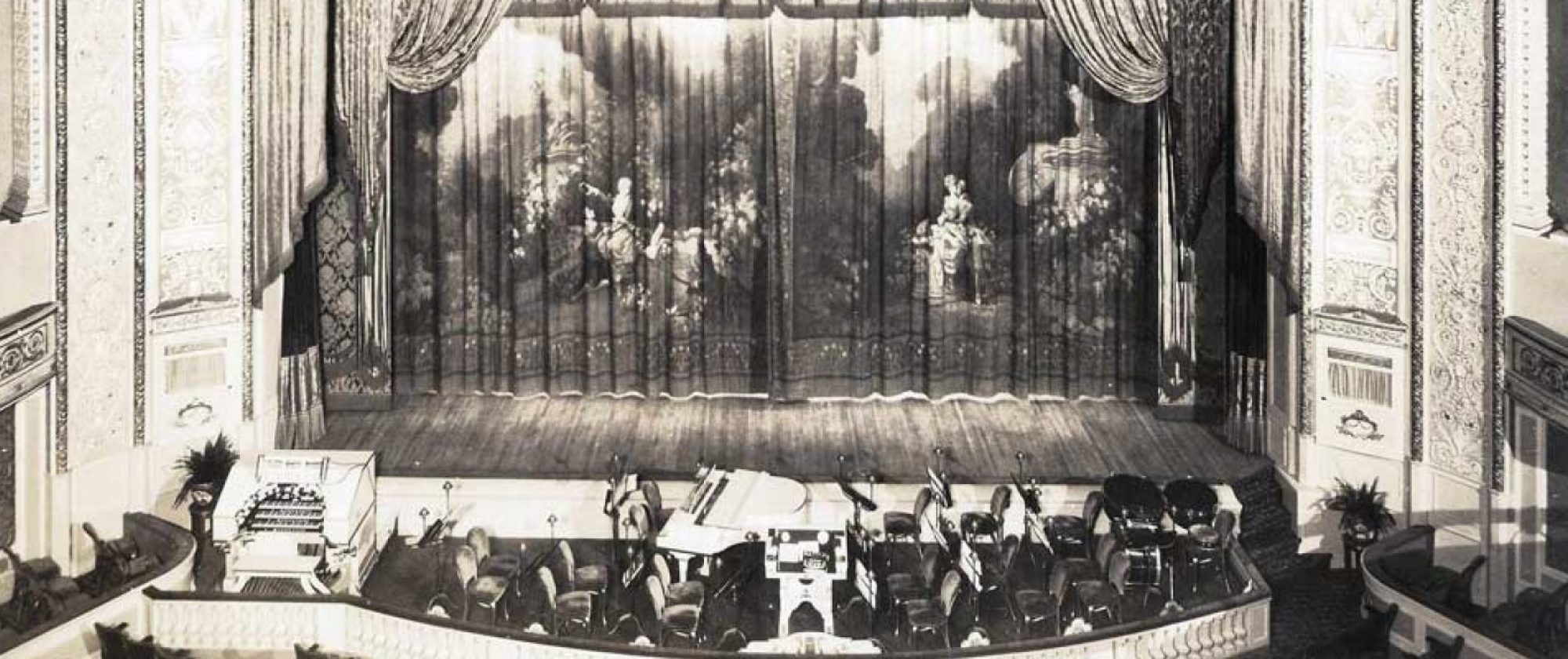Ramsdell and Deyo started with the introductory dance. The waltz number cheered them a trifle more, as did the minuet by the lady on toes. The costume of orange finally caught to open administration of the ladies, so that with the wind-up, the atmosphere was a little brighter. The trio work fast, scarcely losing a second, and satisfied in the opening turn.
The Four Ortons, one of the best comedy wire acts in the business, held them in. The three straight members of the turn are excellent wire workers. The comedian makes a couple of comedy impressions, aided and abetted by a live duck, which struts across the stage in a march following the comic, who is playing a fife. Later the comedian mounts the wire to do some impossible slides and stunts with a wire attached to his shoulder and handled from the files a la Collins and Hart. His facial make-up also runs to the “tramp.” It’s a dandy turn, nevertheless, and will hold the attention of any gathering that gets a peek at the opening.
They were followed by Robert Emmett Keane, who opened like Man o’ War with several new stories and a corking comedy Spanish song. Keane then took advantage of the customers by repeating the same collection of war stories that he was using during the quarrel. He closed with “Scotland in the Morning,” his best recitation. The old boys went just as well as the new ones, so why worry about new material. He was a resounding hit.
Comedy acts predominated, with honors going to George N. Brown, the walker. Brown utilized several boy plants from the audience demonstrate his untameable [sic] home trainer. Two girls also put over ad lib volunteer comedy, finally running out of the theatre in confusion. They fooled a lot of the wise ones. Brown’s finish remains the same. He is considerable showman and is getting the same kind of yells with his plants that used to greet Cliff Berzac’s comedy circus, in a trey spot he goaled them.
Following the Le Groh act the Follis Girls put in an appearance and offered a pleasing little mélange of song and dance. Theirs is a cure act without any great punch, but it carries ideas.
Aileen Stanley, the “Personality Girl,” went for big score on seventh. She gave eight or nine numbers in all, half of them being encored. Miss Stanley is recently out of William Rock’s “Silk and Satins. But for her vaudeville return the routine is all of published numbers. No doubt some well wishers aided in the returns, but Miss Stanley’s ability to handle lyrics is exceptional, and through that she won a lot of legitimate appreciation. With “Broadway Blues” she did excellently, and did more with “Bimbo” than several others using the number could do evenly together. There was a new novelty number of two, not yet established. Miss Stanley stands out from the usual, and it would be interesting to see what she could do with restricted material.
Basil Lynn and William Hewland counted well in the comedy end of the show with their excellently done “A Racy Conversation,” which they displayed for a laughing hit, on fourth just before the Mack playlet. Lynn’s English Johnny was carried through without a slip, and his verses, “Red Roses and Red Noses,” and the like had the whole house giggling. Howland’s impression of John McCormack’s talking machine record is “Let the Rest of the World Go By.” It did not sound so much like a record as a low-pitched tenor, but it was splendidly done and drew encore. The men encored with a prison yard bit, which landed solidly in spite of the bit having been done before.
The first revue to appear was Bobby O’Neil & Co. in “Four Queens and a Joker,” making a corking number three. Herman Timberg is credited with writing it, and the act is as brightly played, prettily costumed and tastefully staged. There is a peach of a song at the opening, with the strain admittedly lifted from a lifting operatic air. The Mexican song and business bit was well done, even if O’Neil dealt the cards the wrong way around. O’Neil’s clever dancing and general playing of the juvenile counted for much. The support in Mable Ferry, Dorothy Godfrey, Fay Tunis and Babette Busey looked good at all times. Miss Ferry had something on the others in the matter of pep, and tossed her curled bobbed head animatedly.
Conn and Whiting, male dancers, got over in the opening spot. Special drop representing an entrance to a dining room for the boys to imitate the routine pursued by the modern waiters is utilized to good advantage. Nothing aside from hoofing. It should keep them working at the smaller houses.
Eadie and Ramsdell, the long combined vaudeville couple established themselves in No. 2 spot with a clean cut comedy turn before one of the most picturesque drops hung at this house in quite sometime. The female member opens, rendering a ballad that registered from every seat but had a very hard time due to the usherettes being forced to accompany patrons to their seats. Why not hold the late comers in the rear orchestra until the act is over?
